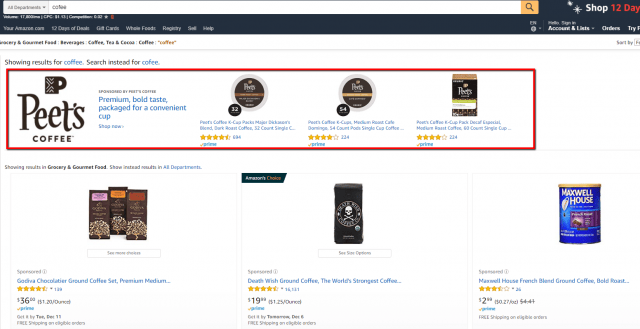
Amazon Sponsored Brands ads are a type of paid advertising that feature a brand logo, custom headline, and up to three products. They appear in search results to help shoppers discover your brand and increase product awareness.
They can also drive traffic to your brand Store or a custom landing page. They are cost-per-click (CPC) and you control how much to spend.
Brands ads
Sponsored Brands ads (formerly Headline Search Ads) are one of Amazon’s flagship ad types that can feature brand imagery, messaging, and a product carousel to engage people at the beginning of their shopping journey.
They can also be a powerful tool for driving conversions and generating more revenue. In fact, they offer the highest return on ad spend (RoAS) of any type of Amazon PPC ads.
To optimize your campaign performance, it’s important to take the time to review your Amazon sponsored brands campaigns on a regular basis. This will allow you to track clicks, spend, sales and ACoS.
You can use a variety of different metrics to measure your sponsored brand campaigns. Among the most helpful are new-to-brand metrics, which let you know how many ad-attributed purchases were made by new customers. These metrics are useful to gauge whether you’re delivering on your brand promise and making a positive impact on your business. It’s a good idea to monitor these metrics weekly and monthly.
Custom image
Amazon Sponsored Brands is the only ad type that helps advertisers tell their brand story. This is an important feature for sellers to take advantage of in a highly competitive marketplace.
To get started, you’ll need to create a Sponsored Brands campaign. This will require selecting a product collection, a landing page and at least one product to advertise in your Sponsored Brands campaign.
You’ll also need to add a custom image to your sponsored brand ad. This will show shoppers your brand or products in use, demonstrating a high level of visual impact on the Amazon platform.
The image you upload to your ad will be displayed on desktop, tablet and mobile app at the top of customer search placements. It’s recommended that you select a custom image with a minimum size of 1200 x 628 pixels, under 1 MB and in PNG, JPEG or GIF file format.
Targeting
Targeted advertising is a type of online marketing that uses specific information to create ads that target customers. This includes information about consumer behavior and browsing habits, as well as demographic data like age and location.
To do this, advertisers use cookies, which are pieces of data that save information about a person’s computer. When someone visits a website, these cookies tell the advertisers what they’ve done on that site.
However, some people find targeted advertising to be intrusive and unsettling. They’re not sure what the benefit of seeing ads related to a product they already purchased is, and they feel as though this invasion of privacy makes them feel less secure about their online activities.
Fortunately, there are many ways to protect user privacy while still reaping the benefits of targeted advertising. These include time and device targeting, behavioral ad targeting, contextual targeting, and geotargeting.
Cost-per-click
Cost-per-click (CPC) is a marketing metric that tracks how much advertisers pay each time someone clicks on their ads. This metric is commonly used to track the effectiveness of digital marketing campaigns across online platforms such as Google AdWords and Facebook.
It’s important to understand how cost-per-click works because it can be a key factor in the success of your ad campaign. For example, if you’re running a B2B website that converts visitors to leads, your cost-per-click will be much lower than if your website sells directly to consumers.
In general, CPCs tend to be higher for search terms that have a high volume of searches or keyword phrases that have a broad range of intents. For instance, you’ll often see a bid higher for a term like “basketball shoes” than a term like “Christmas socks.”

